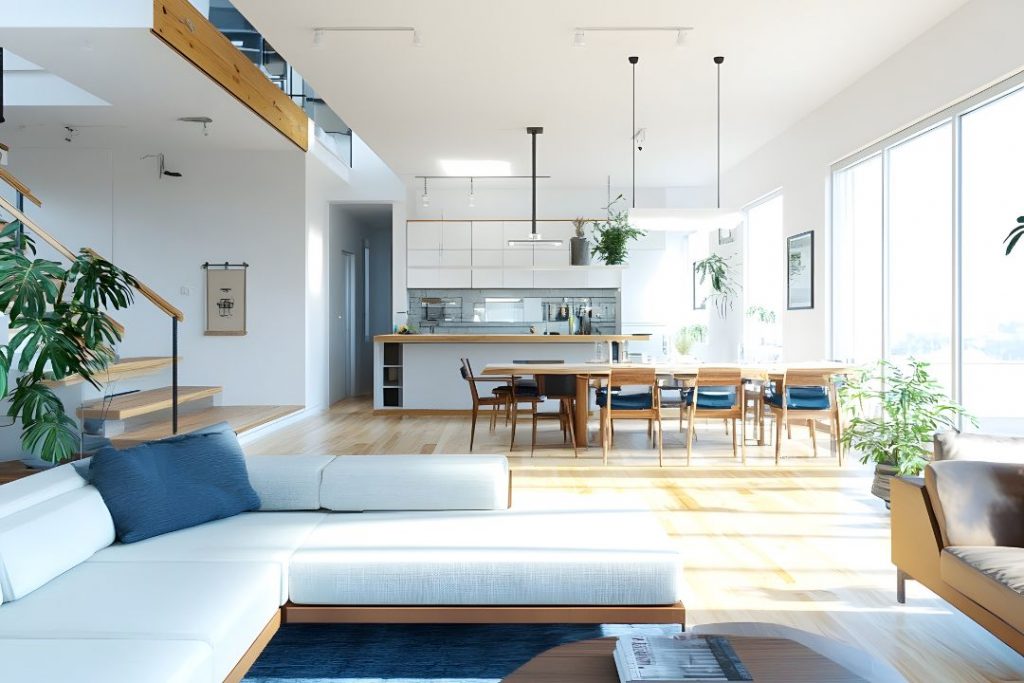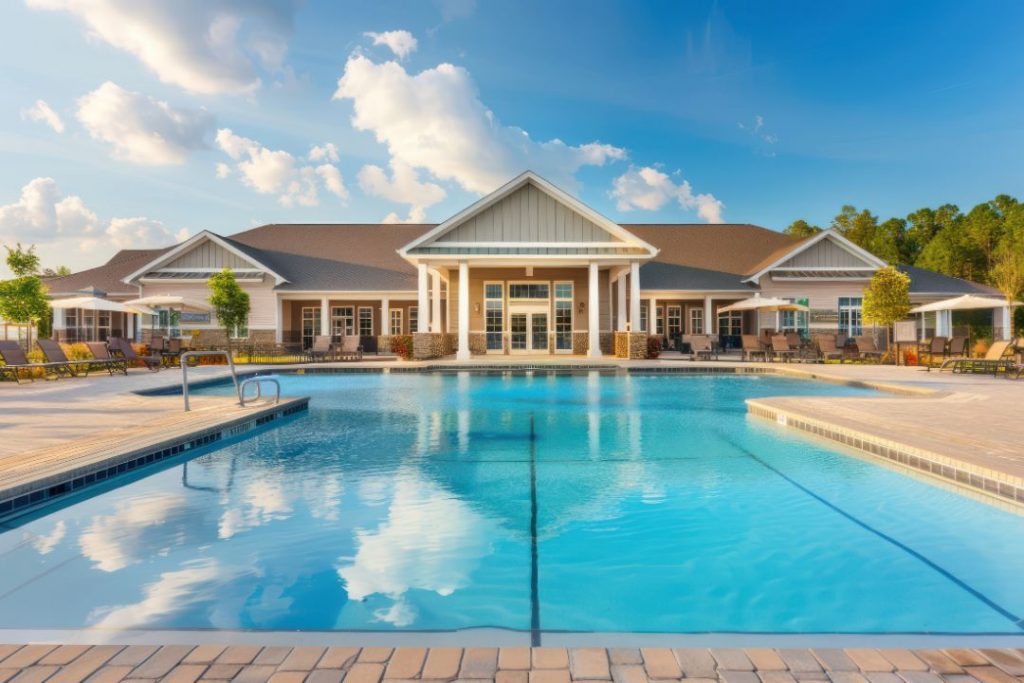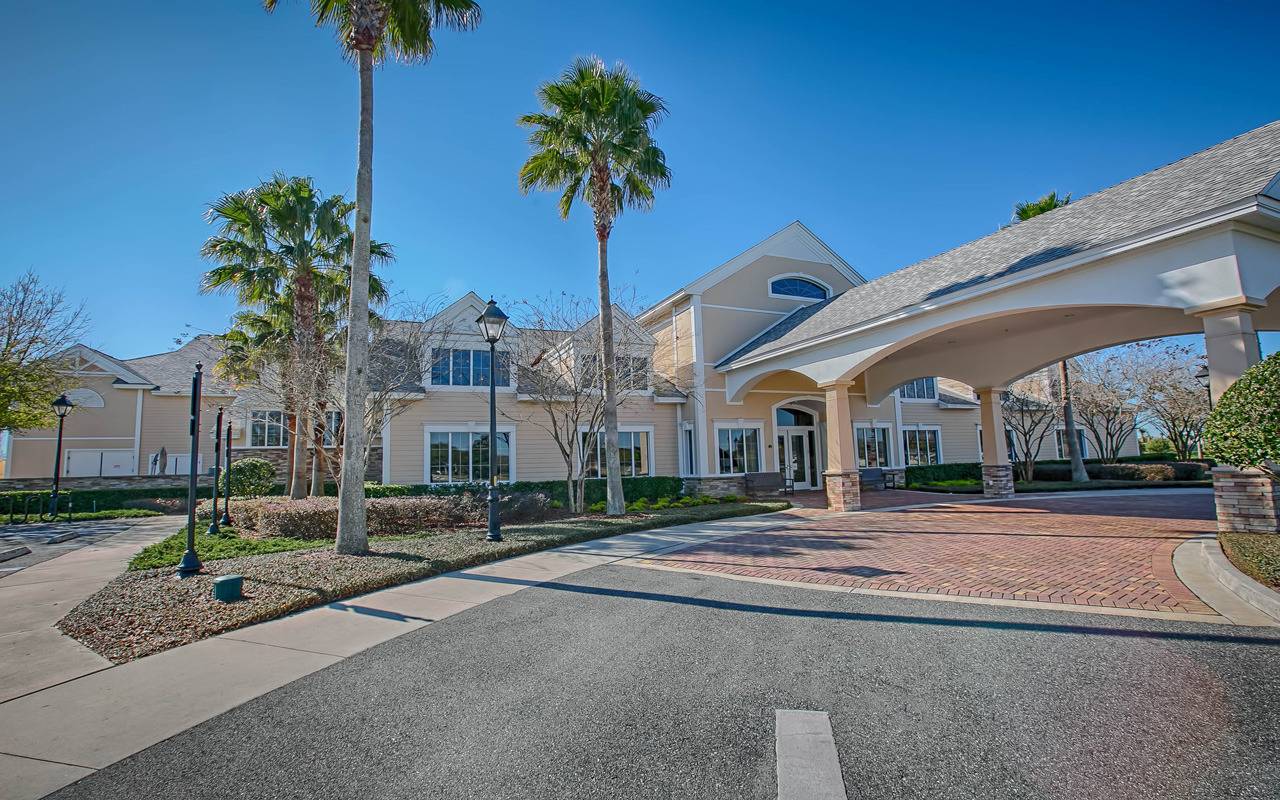Touring 55+ communities can be thrilling and overwhelming for active adults considering moving to an age-restricted community. With so many details to keep track of, knowing what to look for is crucial to make the best decision. Here’s an in-depth guide to help you navigate your home search and find the perfect 55+ community.
Home Design

Sizes and Square Footage: Consider the size and layout of homes. Many retirees prefer downsizing to reduce maintenance. Ensure the home size matches your lifestyle, especially if you plan to host guests. Smaller homes can be easier to manage and maintain, allowing you more time to enjoy community amenities and activities.
One-Level Living: Ranch-style homes offering one-level living are popular among active adults. Check if the community offers homes with master bedrooms and laundry on the ground floor. Single-level homes are ideal for those who want to avoid stairs, making daily living more convenient and reducing the risk of falls.
Architectural Styles and Floor Plans: Explore the variety of architectural styles and floor plans. Many communities offer customization options, such as extended patios and smart home features. Look for homes with modern, energy-efficient designs and features that make life easier and more enjoyable. Consider your style and preferences when choosing a home.
Community Atmosphere
Social Calendar: Many 55+ communities have vibrant social calendars, offering numerous opportunities to pursue new hobbies, enjoy favorite pastimes, and meet like-minded neighbors. Review the calendar to ensure it matches your interests and desired activity level. Some communities have daily events, while others may have a few annual gatherings. Consider whether you prefer a bustling social life or a quieter atmosphere.
Resident Lifestyles: Understanding the lifestyle of current residents can help you find a community that suits your preferences. Check if most residents are retired or still working and if the community is year-round or seasonal. Retirees often prefer living among other retirees, creating a shared experience and sense of community. Additionally, find out if the community has a mix of permanent residents and seasonal “snowbirds” who live there part-time.
Community Grounds: The condition and layout of community grounds significantly impact the overall atmosphere. Look for well-maintained landscaping, parks, and conservation areas. Walking and biking trails are also great amenities for enjoying outdoor spaces. Pay attention to the cleanliness and upkeep of these areas, as they reflect the community’s commitment to providing a pleasant living environment.
Community Amenities

Clubhouse: Most 55+ communities feature a clubhouse as the central hub for social activities. These include fitness centers, indoor pools, libraries, ballrooms, and more. Clubhouses vary in size and facilities, so tour several to compare. A well-equipped clubhouse can enhance your social life and provide convenient access to activities and events.
Outdoor Amenities: Look for amenities like multiple swimming pools, walking trails, parks, athletic facilities, and a golf course. Larger communities may have town squares, retail areas, and medical centers. Outdoor amenities can significantly enhance your lifestyle, providing options for relaxation, exercise, and socializing. Ensure these amenities are well-maintained and easily accessible.
Lifestyle Director: A lifestyle director can significantly enhance your experience by organizing events and activities, making engaging with the community, and pursuing your interests easier. They coordinate social gatherings, classes, trips, and other events. Ask about the lifestyle director’s role and the activities they organize. A proactive and creative lifestyle director can significantly enrich your community experience.
Homeowners’ Association
HOA Fees: Understand what the HOA fees cover, such as exterior home maintenance, landscaping, amenities access, and trash removal. Inquire about additional fees, like a one-time capital improvement fee or minimum reserve requirements. HOA fees can vary widely, so ensure you understand the total cost and what services are included.
Rules and Regulations: Familiarize yourself with the HOA’s rules, including restrictions on visitors, rentals, and pets. Ensure you’re comfortable complying with these regulations. Some standard rules include limits on the number of visitors you can have at one time, restrictions on renting your property, and guidelines for pet ownership. Read the HOA documents thoroughly to avoid surprises after you move in.
Upcoming Projects and Cash Reserves: HOAs hold cash reserves for upcoming projects in the community. Active adults should be aware of planned projects, such as roof replacements, clubhouse remodels, or the addition of new amenities. These projects can affect your living experience and lead to temporary disruptions or increased fees. Understanding the HOA’s financial health and plans is essential.
Surrounding Area
Proximity to Essentials: Ensure the community is close to essential services like hospitals, pharmacies, and grocery stores. Consider the availability of local transportation options, including public transit and community shuttles. Being close to necessary amenities can enhance your convenience and quality of life. Also, check for nearby entertainment and dining options to enjoy your new lifestyle fully.

Urban vs. Rural Setting: Decide whether you prefer being close to urban amenities or enjoying a quieter, rural lifestyle. Each setting offers unique advantages, from bustling city life to peaceful seclusion. Urban areas may provide more cultural activities, shopping, and healthcare options, while rural areas offer tranquility and natural beauty. Think about what environment will make you happiest.
Financial Considerations
Homeownership Costs: Be aware of all costs involved, including HOA fees and special financial requirements. Ask about the potential for fee increases and the reasons behind them. Understanding your financial obligations will help you budget and plan for the future. Ensure you can comfortably afford all expenses without financial stress.
Financial Requirements: Some communities have specific financial criteria for new residents. Ensure you meet these requirements before committing to a purchase. These criteria include minimum income levels, reserve fund requirements, or other financial qualifications. Understanding these requirements is essential to avoid disappointment or complications during purchasing.
Considering these factors during your tour can help you make a well-informed decision and find a 55+ community that perfectly fits your lifestyle and financial needs. For more personalized assistance, contact trusted resources like Active Adult Living to guide you through the home-buying process.




